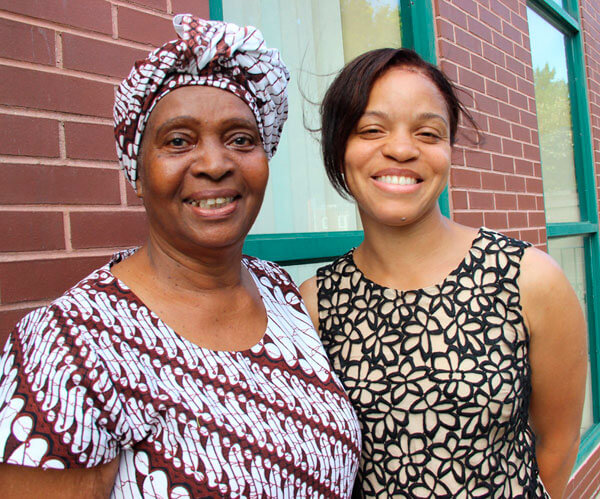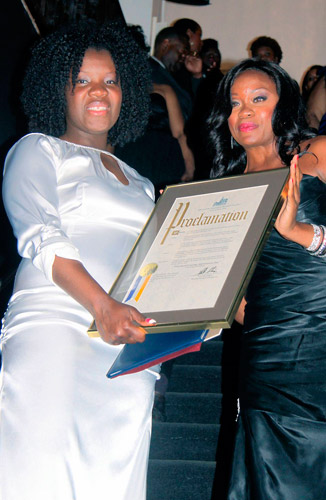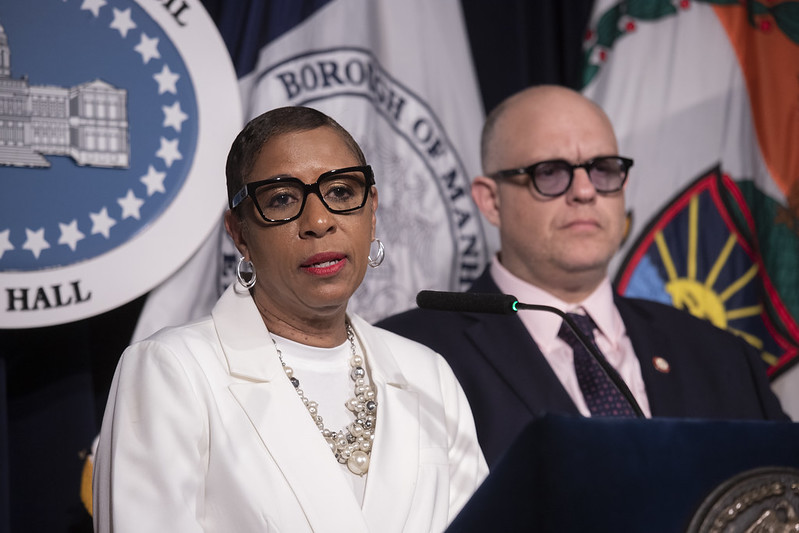The children of St. Jude summer day camp — UN of Caribbean-heritage children — enjoy a packed schedule of dance, sports, academics, field trips and journaling.
‘They come from Haiti, Jamaica, Costa Rica, Grenada, Virgin Islands, Trinidad and we have African-American and a child from Ghana, too,” says founder Ena Garcia, who hails from Trinidad. Her daughter Jillian Garcia is the director.
For 14 years, at the beginning of August, the summer program celebrates Emancipation Day.
[The Slavery Abolition Act 1833 ended slavery in the British Empire, at the end of August 1834. Emancipation Day is widely observed in the British West Indies during the first week of August.]
“I think homage to this day brings consciousness to children and they should be thankful for the persons who paved the way,” says Ms. Garcia. This year’s theme was “Standing Up for Justice.”
The meaning of the day’s observance — marking emancipation — went beyond the British islands.
For the day’s focal point, Professor Richard Green talked about liberation heroes.
Who was the first president of the U.S.?
In 1782, the Articles of the Confederation were ratified by the Continental Congress and chose John Hanson from Maryland as its first president. [One “president” a year, eight in all including John Hancock, pre-dated George Washington’s tenure–he took office in 1789.]
Green spoke of Queen Nanny of the Maroons, 18th century liberator in Jamaica. He described Chief Joseph Chatoyer who led a revolt of the indigenous peoples, then called Caribs, now Garifuna, against the British in St. Vincent.
Of course, Toussaint L’Ouverature, the liberation leader in Haiti was spoken of.
So, too, Green explained about Madam X, a slave whose name is unknown, who warned General George Washington that the British were coming across the narrows from Staten Island (Washington was able to move his troops.) Green teaches African American and world history at Medgar Evers College and is also the founder and director of the Crown Heights Youth Collective.
Music, literature and art were also part of the day.
Pastor Brenda Irvin read Faith Ringgold’s Tar Beach to the children. The story of a young Harlem girl’s wish to fly — a magical story with a universal wish — is illustrated with this renowned artist’s colorful paintings.
Irvin asked the children, “Can you fly?” “Yes,” was the answer from many, “in my imagination!” Irvin also asked, “Can you be whatever you want,” and again their response was a resounding, “Yes!”
Also, during the day, Pat Nurse and the campers made simple carnival head dresses from construction paper and glittery stones. Come Labor Day festivities, Pat makes up to 100 children’s costumes for mas camp Carican’s Junior Carnival.
The music part of end of the day engaged the children with local drummer Olatunji, performing on his West African djembe (pronounced jimbay) drum.
In a cross generation mix, Ms. Garcia’s friend Shirley McKain commented, “The drum makes a beautiful sound. I learned from the drummer how drums were used to communicate and send messages.”
Other elders commented how much they learned from his introduction to Africa. One said, “I had no idea of the immense size of Africa and that it is almost three times the size of the U.S.”
Emancipation Day wrapped up with a Trinidadian meal of peas and rice, corn, and the super sticky tooloom made from molasses, sugar, and grated coconut. Children went home with a “goodie bag” of a hint of the islands, fresh fruit, a hunk of sugar cane, and some island type cookies.




























